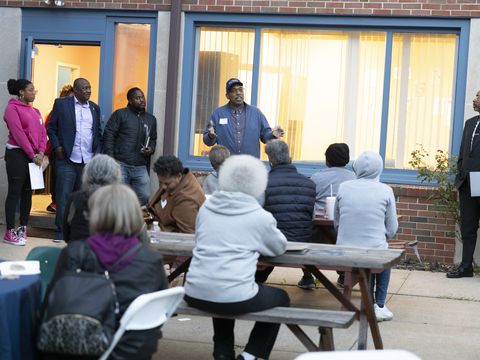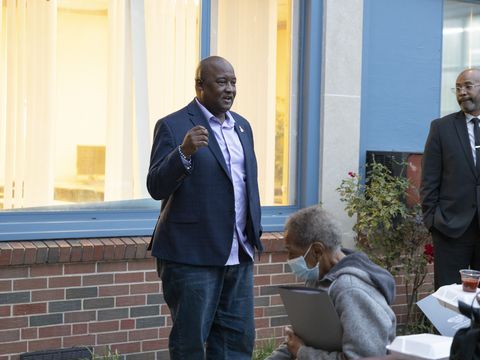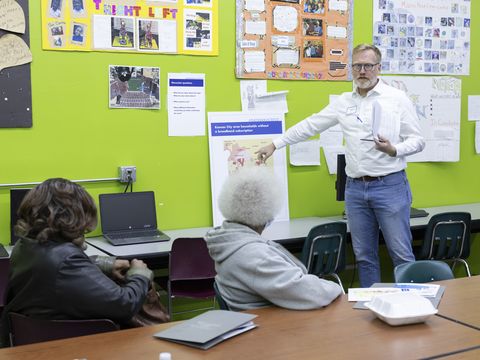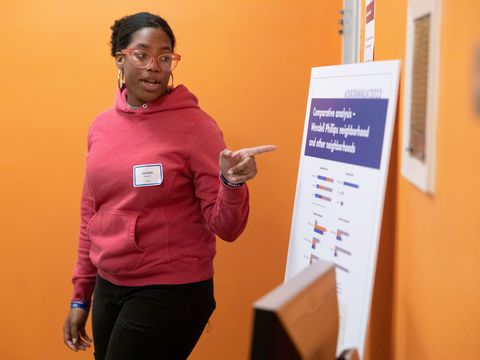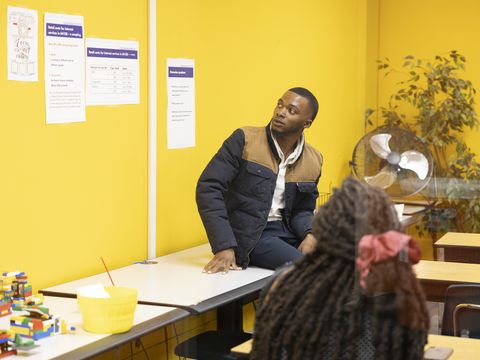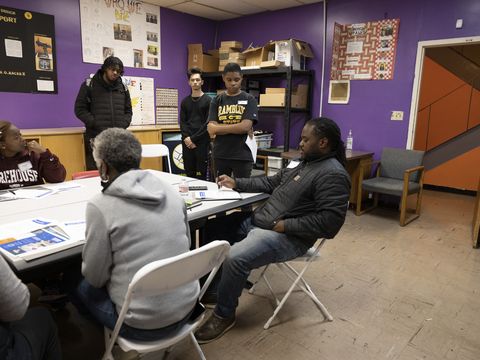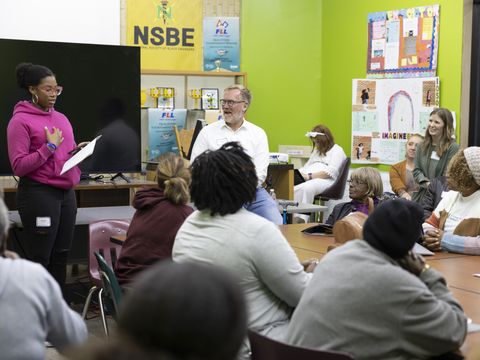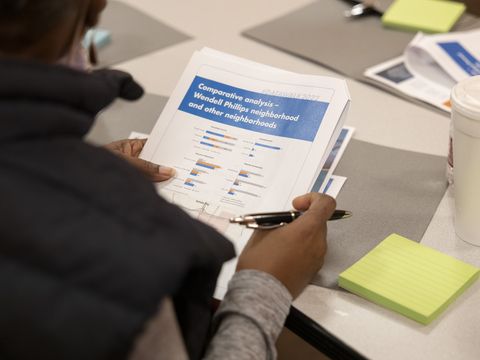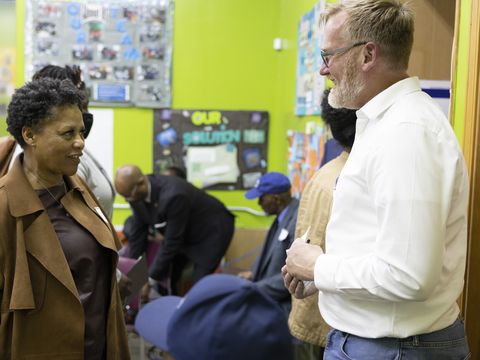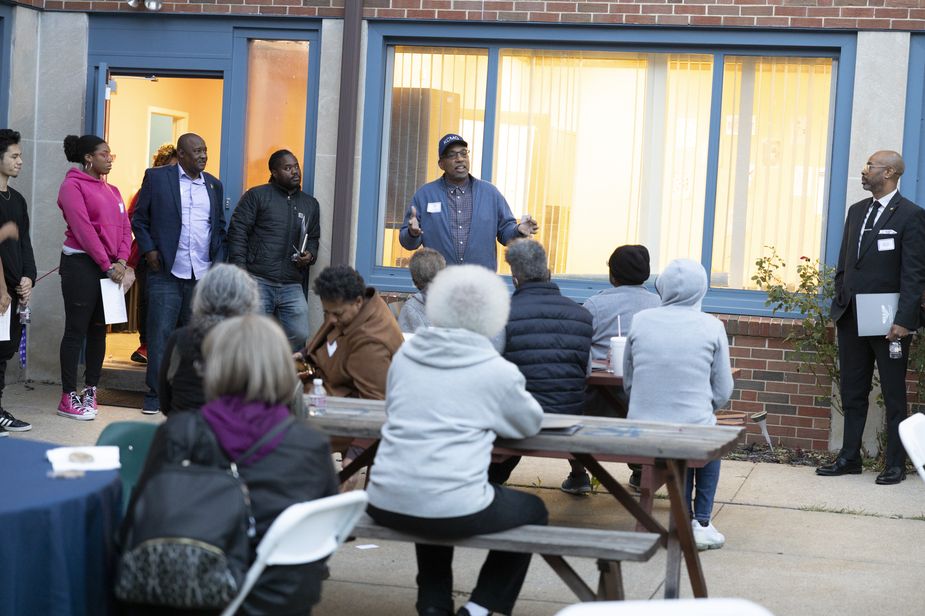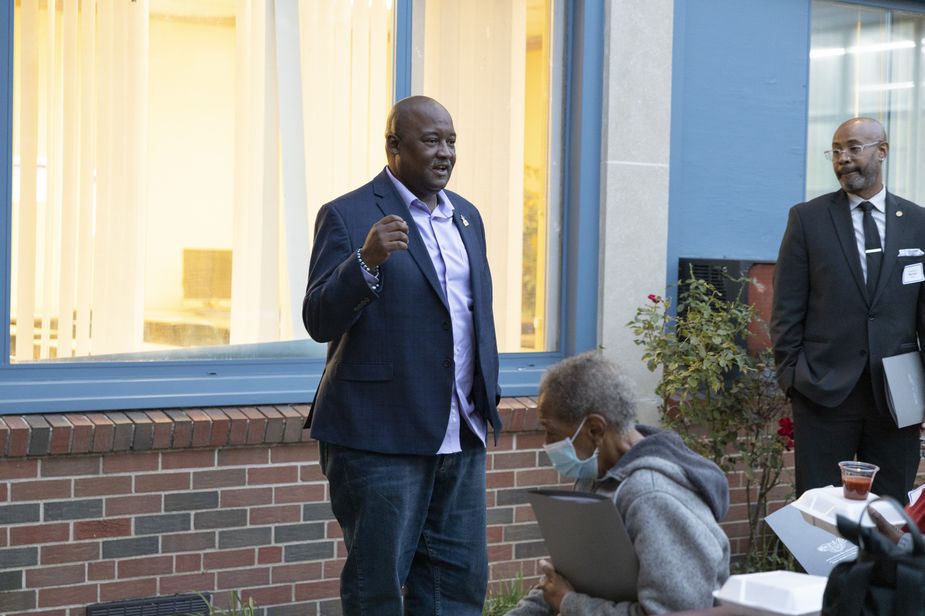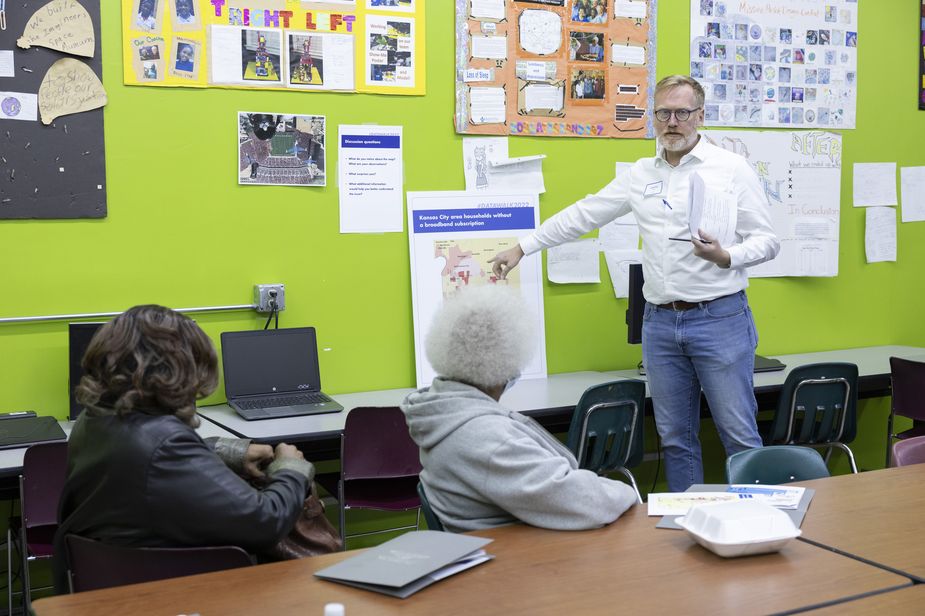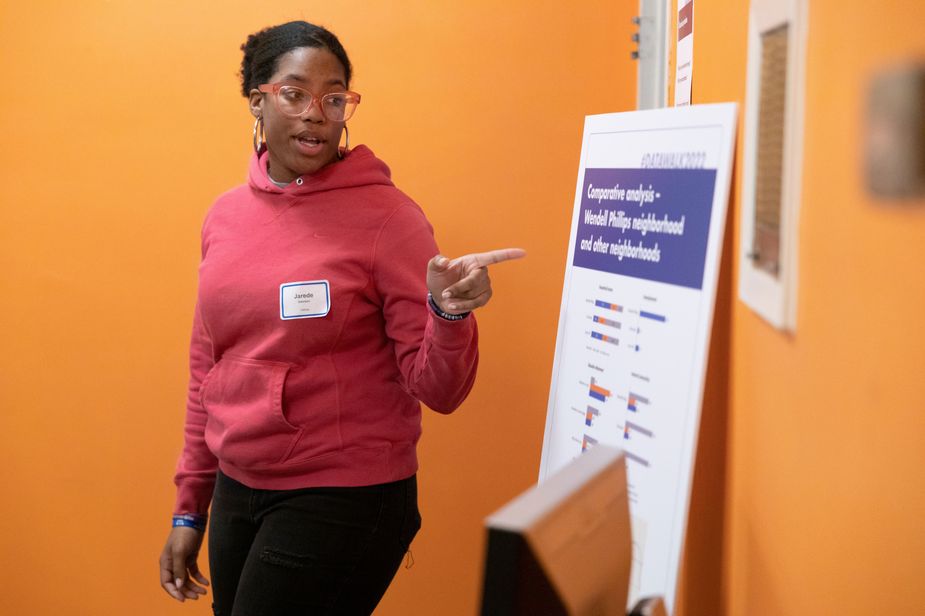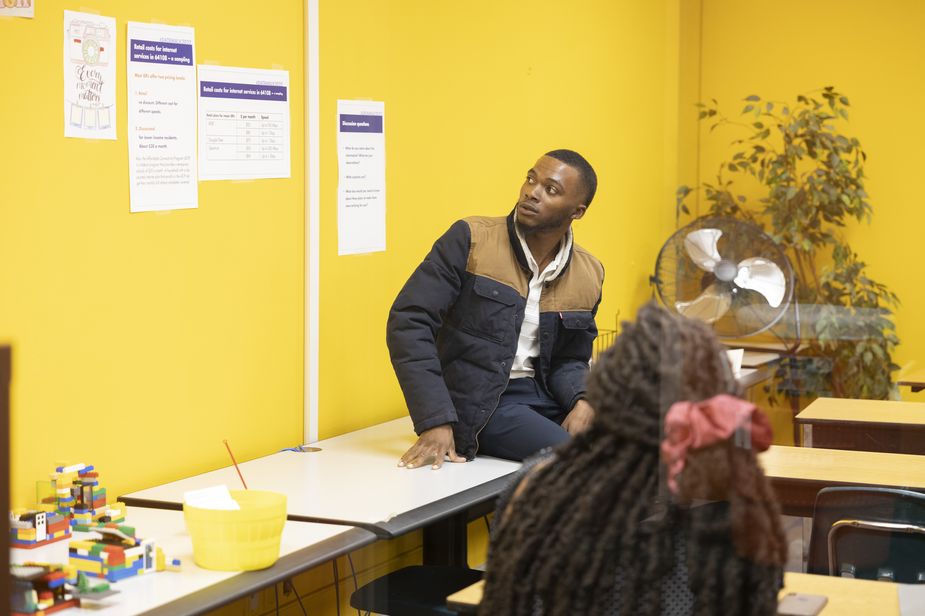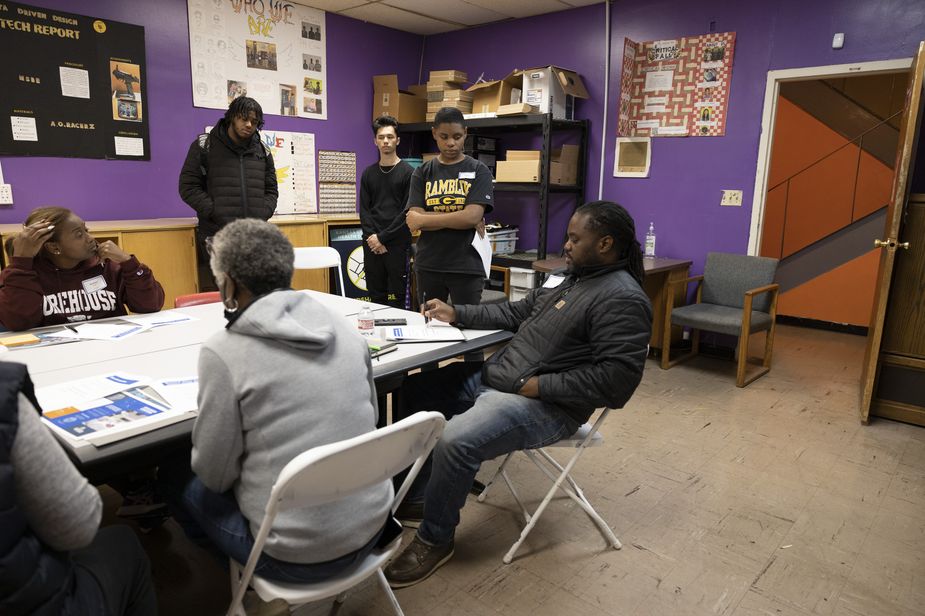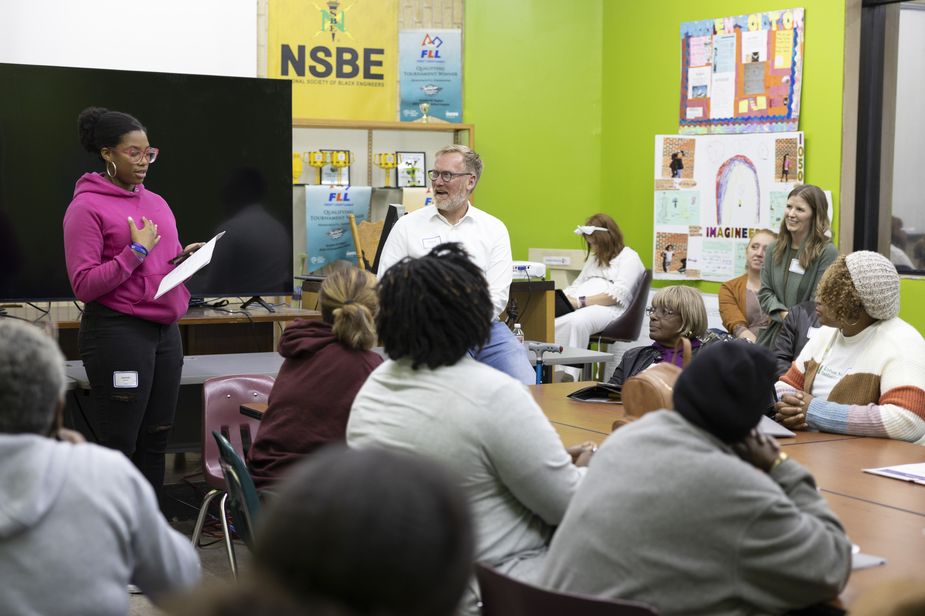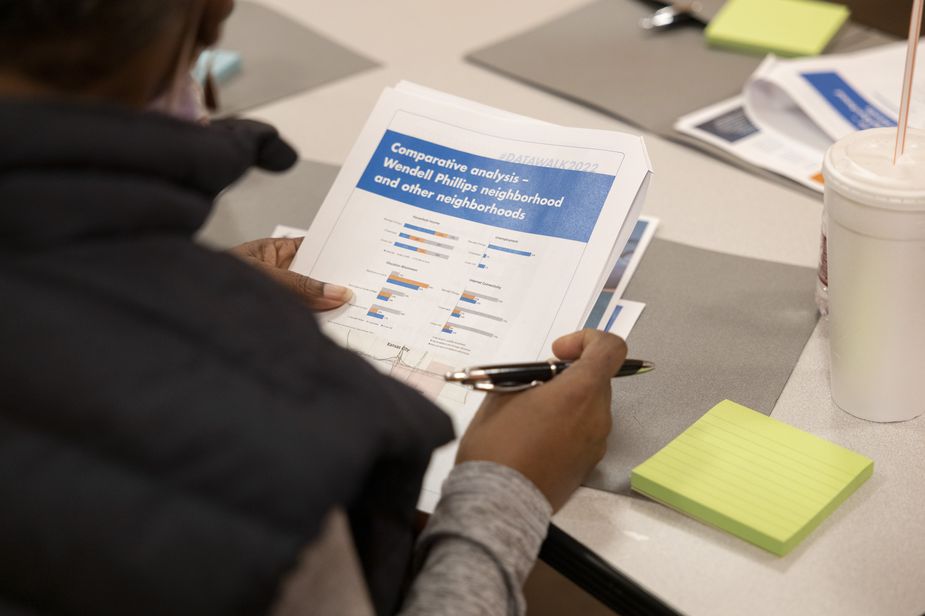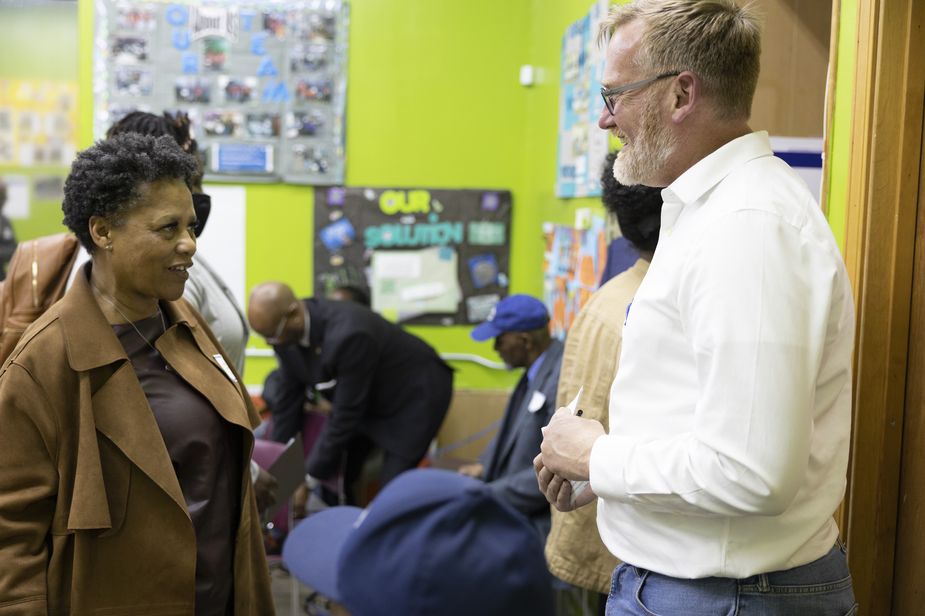In many neighborhoods, people who could subscribe to broadband don’t. They know that access to the internet is essential to survival, and that without it they lack access to health care, jobs, and government services. It is possible people don’t subscribe because it’s too expensive. Or it may be, given that Federal Communications Commission (FCC) maps are known to External Linkoverstate broadband coverage, they don’t have access to broadband at all. In 2022, we decided to check our assumptions and engage one unsubscribed neighborhood in meaningful conversation. These community conversations culminated with the September 6, 2023, release of External LinkCrossing the divide: What we learned from a disconnected neighborhood.
“Community research is often conducted ‘at’ community members,” Jeremy Hegle said. Hegle is assistant vice president and community affairs officer for the Kansas City Fed, whose work has focused on digital equity. “This often leaves participants with a bad taste in their mouths, with a feeling that those conducting the research are missing some key aspects of the issues at hand. We didn’t want that to happen with this project, so we formed a partnership with the community to design the research project. Together, we agreed on the right questions to ask, on how to ensure participants truly felt welcomed and empowered, and ways to leave residents more informed and better off as a result of participating in the research.”
The project team included leaders of the External LinkWendell Phillips Downtown East Neighborhood Association, External LinkaSTEAM Village, and the External LinkKansas City Public Library, along with the Kansas City Fed’s External Linkcommunity development department. The team held a process called a data walk, where it shared data with neighborhood residents and got their feedback on what it meant to them. The data walk was a pilot project, one of four that the Federal Reserve System initiated in 2022 to increase the use of External Linkcommunity-engaged research methods, conducted with communities as partners. The External LinkUrban Institute provided technical support.
It is a pivotal time for digital equity. Over the next several years, states and U.S. territories will receive tens of billions of dollars to expand broadband access. This once-in-a-lifetime infusion provides an opportunity to connect millions to high-speed, affordable broadband. Additional funding will help ensure that broadband is affordable, and that people have the skills and devices needed to utilize it.
This research project identified three main themes.
Historical and continuing disinvestment: Being an historically redlined and disinvested neighborhood comes with ongoing challenges. A recent study found that four national ISPS, including two that serve Kansas City, routinely offered internet at or up to 200 Mbps in majority non-Hispanic white neighborhoods for the same price they charged consumers in historically redlined neighborhoods for 25 Mbps. “It doesn’t feel good that we’re second class and our needs are not worth investing in,” one resident said.
Trust: Few residents trust internet service providers (ISPs) to serve their best interests. While some ISPs offered discounts, residents said they weren’t mentioned in promotional materials. “I get flyers in the mail, but they don’t advertise the discount programs,” one said. They complained of communication that was overly technical and of hidden costs and fees that made comparison shopping difficult. Residents who did have internet service mainly used one provider. They complained of service that was unreliable and much slower than advertised.
Community empowerment: Residents want to better understand technology. While residents wanted ISPs to improve how they treated the neighborhood, they also recognized their own need to become better informed. Along with basic skills, they looked for education at higher skill levels and ways to use the internet for education and skill development for job advancement. They wanted to build their own skills, and those of their children and grandchildren. “These kids will do jobs we haven’t even thought of,” a resident said. “I’m interested in the intellectual capacity of our kids to be fully recognized. Driving the electric vehicle is one thing, but imagining it is something else.”
Our findings will support state broadband and digital equity offices as they craft their plans to reach disconnected communities in their own states. It will also be useful to communities seeking to ensure their populations have affordable, reliable broadband, along with the skills, confidence and devices to utilize it. The findings from this project also will help inform policymakers so broadband infrastructure and digital skills training funds can be spent on the most effective interventions.
The planning team agreed that bridging the digital divide was a solvable problem, but solutions would come from taking action in new ways. “The money that comes into our neighborhood to fix a problem is given to the people that profit from creating the problem,” John James said. James is president of Wendell Phillips Neighborhood Association. “When we talk about communities, we talk about them from the top down. The problem will not be solved if we ask the people who caused the problem to validate the solution.”
Engaging residents is key. “What we learned from this project, and what we heard loud and clear from our community partners, was that community members need to be involved in designing the solution—whether the solution is conducting a research project or figuring out what it’s going to take to get everyone across the digital divide,” Hegle said.

